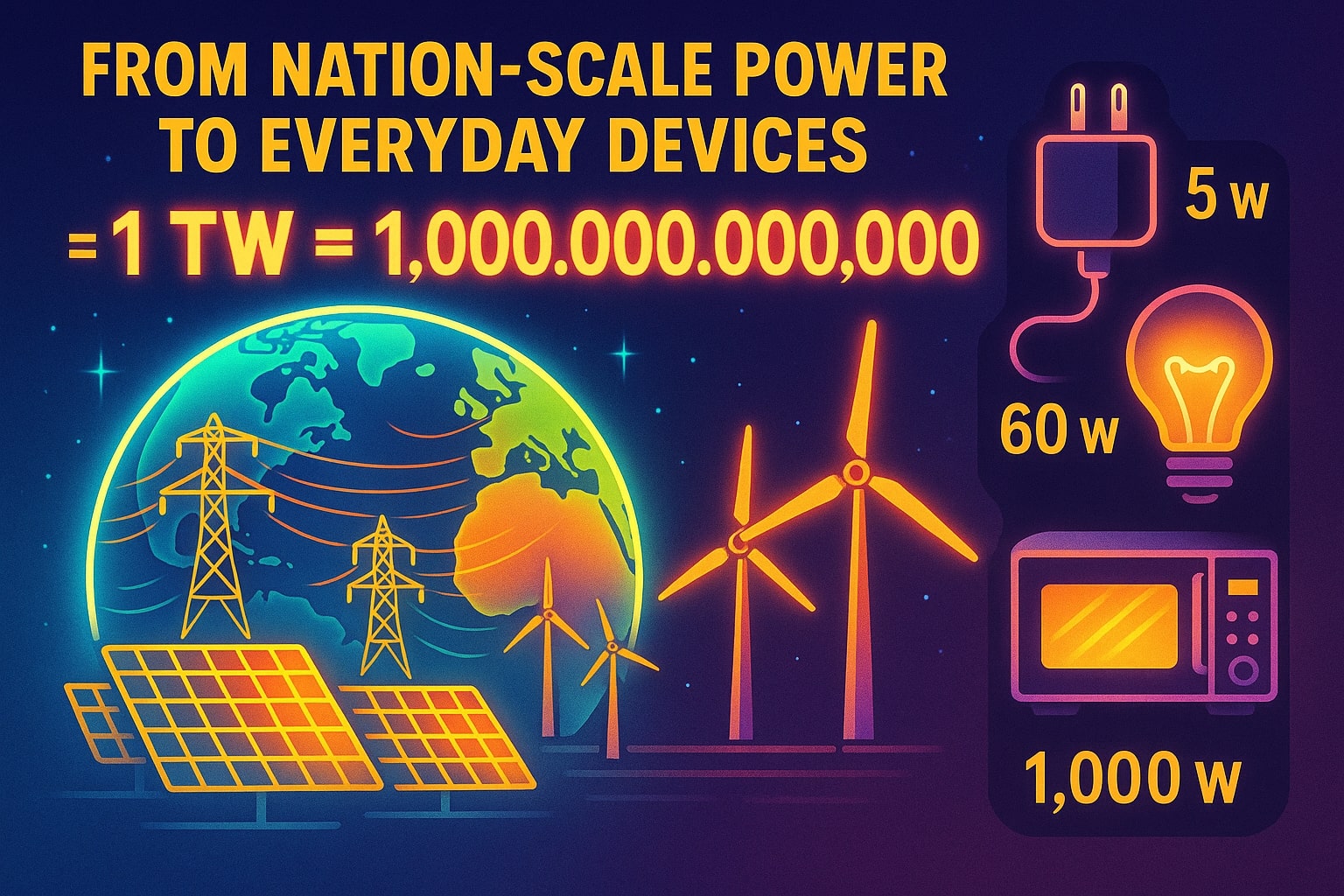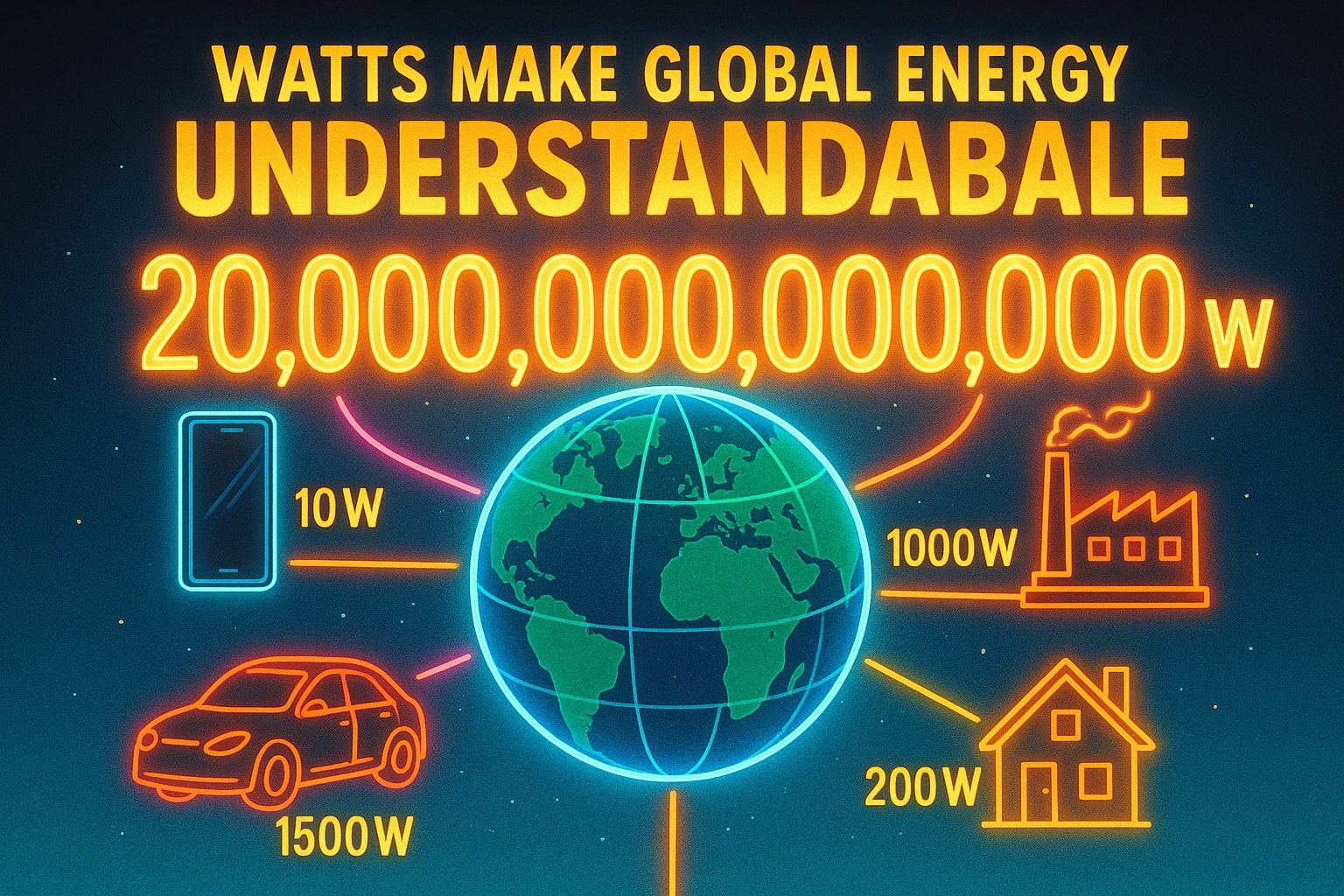Terawatt to Watt – How to convert TW to W
Need to convert terawatt to watt? These two power units represent extremes on the energy scale. Terawatts measure the total power demand or production of countries — or the entire planet — while watts are used for individual devices, appliances, and systems we encounter every day. While they’re separated by a factor of one trillion, the conversion is simple thanks to the metric system. Here’s how to calculate it, where each unit is used, and why this conversion helps us put global energy into perspective.
What is a terawatt (TW)?
A terawatt equals 1 trillion watts (1 × 10¹² W). It’s the unit of choice for describing worldwide energy consumption, massive renewable targets, or the output of entire grids spanning multiple countries.
For context, the International Energy Agency (IEA) estimates that the world consumes roughly 18–20 TW of electricity on average at any given moment, and this figure continues to rise as industries electrify and populations grow.
What is a watt (W)?
A watt is the SI unit for power, equal to one joule per second. It’s used in everyday contexts — from the energy a phone charger draws (about 5–20 W) to the power used by household appliances, lighting, or even solar panels.
Watts are the foundation of all power measurements, making it easy to connect small-scale devices to massive energy figures when using metric conversions.
How to convert terawatt to watt
The calculation is direct:
1 terawatt = 1,000,000,000,000 watts (1 TW = 10¹² W)
To convert:
Watts (W) = Terawatts (TW) × 1,000,000,000,000
Example: If the world’s wind farms collectively produce 3 TW of energy:
3 × 1,000,000,000,000 = 3,000,000,000,000 W (3 trillion watts)
For quick results (without counting all the zeros), try our Power Converter or check more Conversion tools.
Did you know?
-
Global power footprint: Humanity’s energy demand averages 20 TW, which equals 20 trillion watts across all sources of power.

-
Renewable growth: According to the International Renewable Energy Agency (IRENA), global renewable capacity surpassed 3 TW (3 trillion watts) in 2022 and continues to expand.
-
Historic comparison: In the early 20th century, global electricity generation was under 10 GW (10 billion watts) — less than one-thousandth of today’s energy demand.
-
Natural energy scale: Earth receives about 173,000 TW of solar power at the top of its atmosphere daily — far beyond humanity’s total consumption.
Why Converting to Watts Makes Energy Feel Real
While terawatts help scientists and policymakers describe global energy, breaking those figures down into watts makes the scale easier to grasp. Reports from Bloomberg New Energy Finance show that converting massive totals into watts allows engineers and businesses to relate them to the devices, systems, and projects they work with daily.
For example, stating that global electricity demand is 20 trillion watts helps illustrate just how many billions of devices, vehicles, and systems that power supports — connecting the global energy picture to our everyday lives.

From Global Numbers to Everyday Power
Converting terawatt to watt is just multiplying by a trillion, but the result shows how our personal energy use fits into humanity’s massive consumption. Watts make the scale relatable, while terawatts capture the vastness of global demand and renewable growth.
For fast and accurate conversions, use our Power Converter or explore other Conversion tools to make any power calculation effortless.

